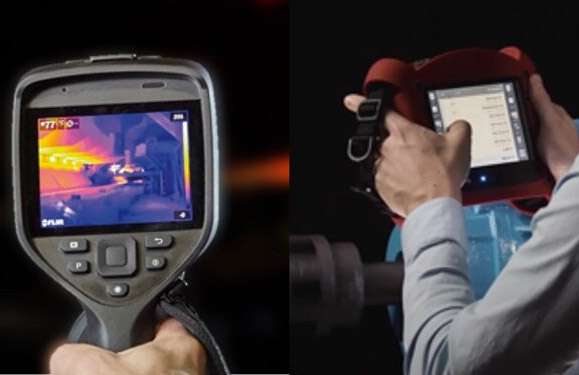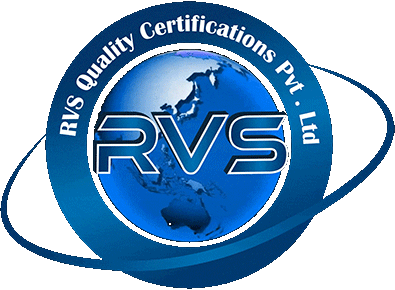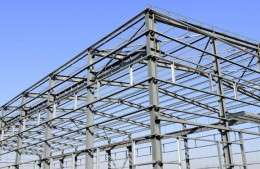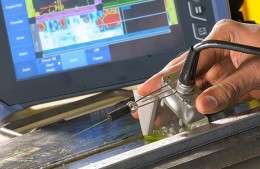I have been out of industrial activity after completing my graduation for about 2 years, then RVS Quality Certifications Pvt Ltd has changed my outlook on my career. Adopting a course in NDT has helped me launch my career.
What Important Parameters Are Tracked in Condition Monitoring Services
- By: Admin

Prevention is currently the best cure in today's fast-paced industrial and infrastructure environments. Condition Monitoring Services from RVS Quality Certifications Pvt. Ltd. bring into play systems and strategies that facilitate understanding the health conditions of machinery, structural assets, and equipment over time. Such services help derive huge savings in costs, time, and safety by identifying the impending failures that would have become worse explosions. What measures do these services implement? Let us identify some of the key parameters that are permanently under observation so that the systems and their structures will remain in optimal working condition.
Vibration Levels
One of the most common and popular techniques in condition tracking is vibration monitoring. It is extensively used in applications involving rotating equipment, like motors, pumps, and compressors. Excessive and erratic vibrations are indicative of a mechanical fault, which could include imbalance, misalignment, or bearing failure. By setting baselines and tracking deviation, operators can find out not only when something is wrong but also how urgent the situation is. Timely intervention through vibration prediction has prevented breakdowns costing large sums of money; in some cases, these have extended the life of equipment.
Temperature Fluctuations
Overheating in either the equipment itself or its electrical circuit may be a reflection of friction, electrical failure, or poor cooling system design. Sudden temperature drops may also indicate problems with thermal regulation or the presence of leaks in fluids. Beyond this, evaluating temperature variations provides companies with opportunities to monitor critical parameters that can potentially maximize operational conditions.
Acoustic Emissions
Sound analysis is a developing technology for diagnosing micro-cracks and leaks in structural components or piping systems. Sensitive high-frequency acoustic sensors capture sounds beyond the range of normal human hearing, which may relate to wear, corrosion, or instability within structures. This is very useful in applications related to the structure's stability, where internal failure can be detected in time, saving it from catastrophic failure, hence saving human life. It helps engineers decide whether a structure needs reinforcement, repair, or replacement.
Oil Quality and Lubricant Analysis
Oil quality is monitored for systems that are highly dependent on lubrication for their functions, turbines, engines, and hydraulics being prime examples. The information yielded from these parameters—viscosity, contamination, metal particles—indicates the wear patterns as well as the degradation that has taken place in the system. Regular oil analysis supports proactive maintenance scheduling and ensures smoother operation of engines with comparatively less risk of abrupt breakdowns.
Electrical Current and Voltage Analysis
Monitoring current and voltage is a vital indication of the health of electrical systems. Imbalances in power draw, harmonics, or voltage spikes can be early signs of a motor inefficiency, wiring issues, or insulation breakdown. Through the continuous tracking of electrical measurements, it is possible to establish whether components work within safe thresholds, and timely preventive action can be taken.
Structural Displacement and Movement
Bridges, towers, and other Building Structural Stability are all structural assets that shift ever so slightly with time. Though imperceptible at first, these changes can alter the long-term structural integrity of the asset. Engineers monitor and measure structural displacement with reference to sensors and laser-based systems. Such data can therefore be used for early intervention in addressing any shifts before they become safety concerns, hence making this parameter critically important in civil engineering and infrastructural development.
Environment-Related Considerations
Air fundamentals, such as dust, humidity, and air quality are all determinants of how well a machine or structural material will perform. For example, excessive moisture helps speed the process of rusting, while high dust concentration will block filters and ventilation systems. Based on environmental parameters, therefore, maintenance schedules can also address issues related to external factors that affect overall asset performance.
Role of Quality Equipment Suppliers
Behind every successful monitoring strategy is reliable instrumentation. Sensors, analyzers, data loggers, and communication interfaces must meet performance and accuracy standards. Working with trusted Inspection Equipment Suppliers ensures that the tools used are robust, calibrated, and suitable for long-term deployment. Such quality equipment improves data reliability and reduces the frequency of recalibration or replacement; hence, it is cost-effective.
Performance-Saving Monitoring
The details do most of the work when it involves effective condition monitoring: noise, vibration, temperature changes, sound patterns, structural movements, and so on. When taken together, all these parameters show an asset's complete picture of health. Each attribute may be worthwhile on its own, but it's their integration with each other that truly gives rise to the ultimate predictive capability. Condition-based maintenance is an inevitable application in the field of preventive maintenance and asset care over the long term. Choosing the right service provider, tools, and strategy ensures that you're not just reacting to problems but staying steps ahead of them.
RVS is the absolute best value to learn Aerospace NDT Training Course to nurture my skills. I am completely satisfied with how affordable the service they provide. Thanks RVS Team for constant support.
I would like to thank RVS for their time and patience in helping me learn and grow with my NDT courses. I was able to work and learn at the same time, with no pressure. I would recommend RVS to anyone seeking to work and take courses at the same time. I accomplished the course and today I'm a Certified PCN Level II UT engineer.
RVS helped our new hires to acquire the comprehensive training they need, as well as for refresher courses for our current employees. This has worked well for us in obtaining the necessary NDT certifications.
Just a few lines to express my gratitude for your outstanding service over the past year. We would have no issue in referring to your organisation because of your customer devotion and professionalism.
NDT is employed in a wide range of industries, including oil and gas, aerospace, energy, power, nuclear, and transportation, with nearly endless career opportunities. A job in NDT is extremely dynamic, and ongoing training is required.
One of the advantages of a four-year NDT programme is that students can study in a more focused and instructive manner. For graduates, this offers up a plethora of new NDT employment options, including quality assurance, management, engineering design, research, NDT training, and teaching.
Non-Destructive Testing (NDT) Training Courses - Levels 1, 2 and 3.
The PCN (Personnel Certification in Non-Destructive Testing) is a programme that meets the BS EN ISO 9712 requirements for NDT technicians and supervisors. It is founded in the United Kingdom, but it has an impact on a number of countries in the European Union.



-is-the-best-career-optioneE6f.jpg)




